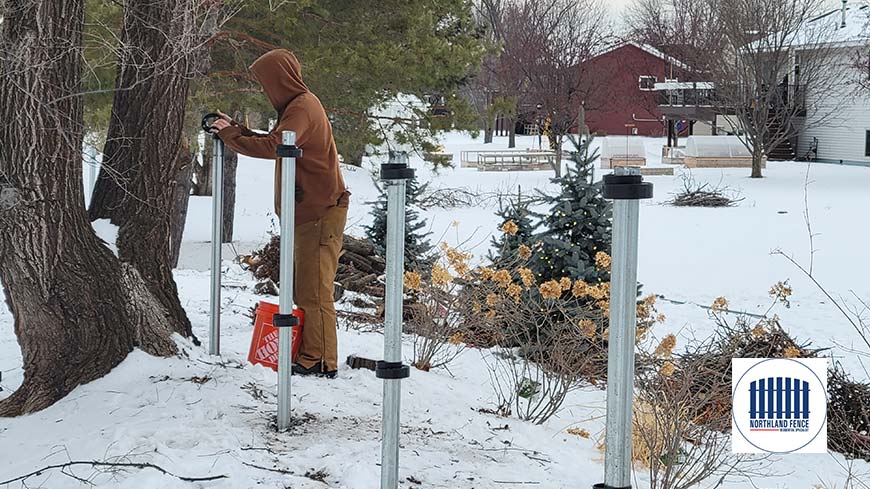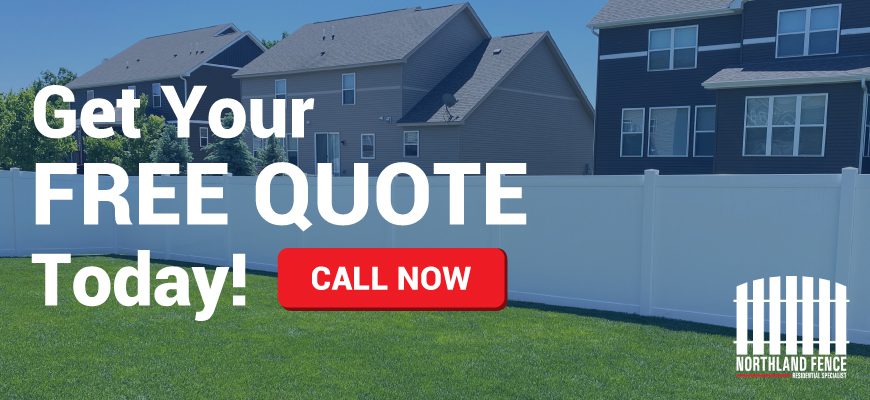Installing a fence can bring up a lot of questions you might not have thought about when you originally decided you wanted to put a fence on your property. If you haven’t fenced in an area before, there are many things you might not readily know the answer to. One of these things is exactly how far apart your fence posts should be.
Northland Fence has been in the fencing industry for over 15+ years. We strive to keep up-to-date with the best fence installation practices in order to continue to provide you with the best experience and highest quality fence possible.
When trying to determine the best spacing needed for fence posts, there are a few factors that you need to consider. How big is the fence going to be? What materials are you using? How will you be securing the fence posts?
At Northland Fence, we only install three types of fencing: chain-link, ornamental steel, and vinyl. We’ve determined that these are the best options for our customers that provide the best outcome no matter the needs of the yard. The post needs for each of these types vary, just as additional fencing types such as wood or barbed wire would also require potentially different spacing.
The general rule of thumb for post spacing is about a 5-8 feet distance between each post. There are exceptions, especially with chain-link, where the posts can be stretched further if needed. It is important to have posts at specific locations, such as corners or endings, in order to maintain structural integrity.
The Two Methods of Installing a Fence Post
Our installation team at Northland Fence only drives posts when installing fences for our customers. There are two primary ways you can secure your fence post – concrete and driving them.
Concrete bases are the most traditional option when it comes to making sure your fence posts are stable and secure. However, they come with many drawbacks that don’t occur with driven fence posts. The process needed to pour the concrete base makes a larger mess of your yard and requires a drying time before you can mess with it again. In addition, concrete bases can heave and or be exposed due to erosion. In this Minnesota climate, inclement weather can impact your fence in many ways. Concrete bases can be dislodged if the post is hit just right, or even fully exposed due to erosion from weather or other incidents.
With driven posts, the posts sit 4 feet or deeper below the ground. The general rule of thumb is to have at least 50% of the above-ground height to be underground as well. This means if you have a 6-foot fence post above ground, there be at least 3 feet of the post below ground. Having a fence post driven into the ground takes away the risk of erosion or heaving. In addition, it is a much cleaner installation process and requires no waiting time once it’s done.
Different Types of Fencing Require Different Types of Posts
The fence post you use for your fencing project is going to depend on the fence material you’re using. You probably wouldn’t want to use a wooden fence post for a chain-link fence or a vinyl fence post for an ornamental fence.
The primary types of fence posts need to correspond with their respective fence types. Chain-link fences tend to have metal poles, which are similar in fashion to those used for ornamental steel. However, in the case of our ornamental fencing, we always use galvanized steel, which is a bit different from our chain-link posts.
Vinyl fencing comes with its own form of posts that work best with the vinyl paneling while maintaining the aesthetic of the fence. This is the same as wooden fencing, which has its own wooden posts that work best with the appearance and materials of the fencing around it.
Posts can also come in different heights depending on the needs of your project. If you have Northland Fence help install your fence for you, we’re happy to talk about the different options you have within the fence style you desire.
Can You Use a Metal Post with a Wooden Fence?
Wooden fence posts will rot over time, it’s unavoidable. Because of this, some people who have wooden fences might consider looking into metal posts instead of wooden ones to help extend the life of their fence. While this is totally possible, not everyone always likes the look of it at the end.
If you decide to use metal posts to install your wooden fence, the spacing will still be fairly average using the 5-8 feet rule between each post.
How Deep Should a Fence Post Be Buried?
Driving a fence post is the most secure option you can choose when building a fence. Not only is driving a fence post a cleaner installation, but it can’t be impacted by erosion or heaving.
The depth at which you drive your fence post is important. It’s recommended that you drive the post at least 50% of the above ground height into the ground. This means if your fence posts are 6 feet tall, you should have an additional 3 feet of the fence post underground. Here at Northland Fence, we like to use a 4-foot minimum when driving fence posts underground. There is no such thing as driving them too deep, however, when installing a fence, don’t forget to check what might be under your yard, such as sewer lines or electrical lines. If you hire Northland Fencing to install your fence for you, this is a process we will take into our hands to make sure your installation is safe and smooth.
Does Fence Height Affect the Distance Posts Should Be Set Apart From Each Other?
Fence height can affect many things such as height of the posts, how much material you need, and your total cost. What it doesn’t affect, however, is the spacing between the posts. Just make sure to use the recommended distance per the fence type you’re installing.
Getting Professionals to Install Your Fence
We know one of our customer’s biggest concerns when wanting to get a fence installed can be the cost of it. This is why many homeowners might weigh the option of installing the fence themselves. While this can potentially cut down on costs, it also can make it more expensive in the long run.
Installing a fence takes many hours for an individual, and can require many tools that the average homeowner doesn’t have lying around. Buying these additional tools can quickly add to the overall cost of a product. In addition, the average person purchasing the necessary fence materials can’t find the same deals as a professional. As a company that’s been in the fence business for over 15 years, we have direct access to manufacturers and know how to get the best price for bulk materials. We pass those savings directly onto our customers in order to give them the best price possible for their installation.
In addition, choosing Northland Fence to install your project not only ensures the job is done fast and correct the first time, but it saves you time that you could be spending doing other things.
If you are interested in learning more about our installation process and costs, would like to get a free estimate, or have any questions at all, don’t hesitate to give us a call today at 763-316-4881.
FAQs How Far Apart Should Fence Posts Be
Does each fence type have a minimal distance from post to post?
While fence types like chain-link or barbed wire have a much wider distance between posts, other fences such as wood, vinyl, or ornamental steel recommend a range of 5-8 feet between posts.
Can I build a fence next to my neighbor’s fence?
As long as you are within your property line, you can build next to your neighbor’s fence.


